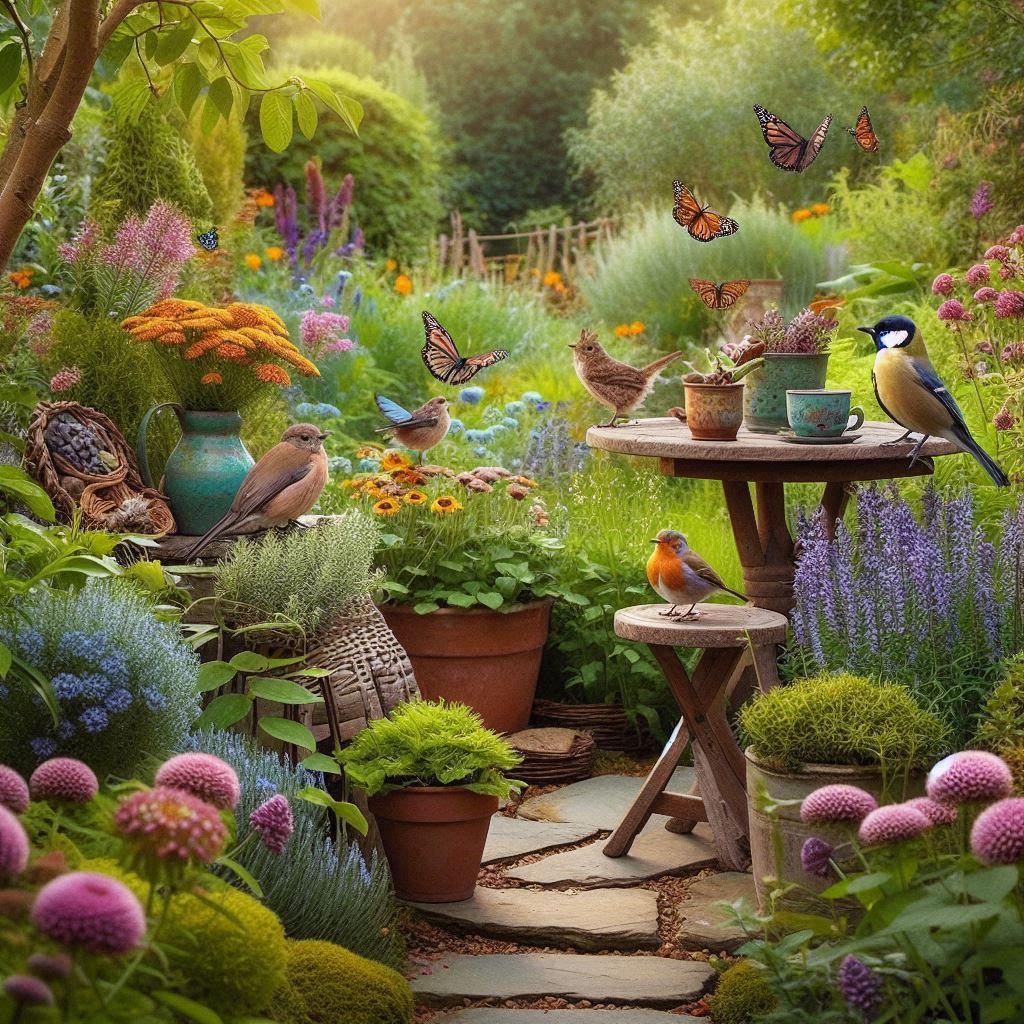Plant Native Flowers and Shrubs for Natural Appeal
Planting native flowers and shrubs that naturally flourish in your area is one of the best ways to draw birds and butterflies to your garden. Wildlife depends on native plants for vital food sources like nectar, seeds, and berries. Coneflowers, black-eyed Susans, and milkweed are great flowers to draw butterflies, and shrubs like viburnum, elderberry, and serviceberry can produce berries that are good for birds to eat. By using native plants, you establish a habitat that benefits the surrounding ecology and provides a dependable source of food and cover for birds and butterflies. Native plants are also typically more climate-appropriate and low-maintenance, which makes them a sustainable option for your wildlife-friendly garden.
Provide Fresh Water Sources for Drinking and Bathing
If you want to draw wildlife into your garden, water is a must. Both butterflies and birds require fresh water for bathing as well as for drinking. Any wildlife-friendly garden would benefit greatly from the addition of a birdbath, which offers birds a shallow, secure place to drink and bathe. To stop the growth of algae and to draw in more species, make sure the water is clean and fresh. Since butterflies are attracted to still, shallow water, you can also attract them by adding a shallow dish with pebbles or rocks as a landing spot. To keep the water cool and visually appealing and to create a wildlife haven in your garden, think about positioning water features like a small fountain or pond in shaded areas.
Create Shelter with Trees, Hedges, and Nesting Boxes
Giving birds and butterflies a place to nest, rest, and flee from predators will make your garden a more inviting place for them to visit. Tall grasses and dense foliage can serve as resting places for butterflies, and trees, shrubs, and dense hedges can provide excellent cover and safe nesting sites for birds. To provide a secure environment for birds to raise their young, you can also erect birdhouses or nesting boxes in trees or atop poles. When planning your garden, think about the arrangement and make sure there are places where wildlife can hide from the weather. You can create a wildlife safe haven in your garden by balancing open spaces and sheltered areas.
Avoid Pesticides and Use Organic Methods for Pest Control
Avoiding the use of pesticides and other dangerous chemicals, which may harm the birds and butterflies you are trying to attract, is essential to maintaining a wildlife-friendly garden. In addition to eliminating pests, pesticides can damage pollinators such as butterflies and the insects that provide food for birds. Rather, use natural pest deterrents like neem oil or diatomaceous earth and introduce beneficial insects like ladybugs. These are examples of organic gardening techniques. Because birds will eat harmful insects, promoting biodiversity in your garden can also aid in the natural management of pests. You can encourage a healthier habitat for birds, butterflies, and other beneficial wildlife by keeping chemicals out of your garden.
